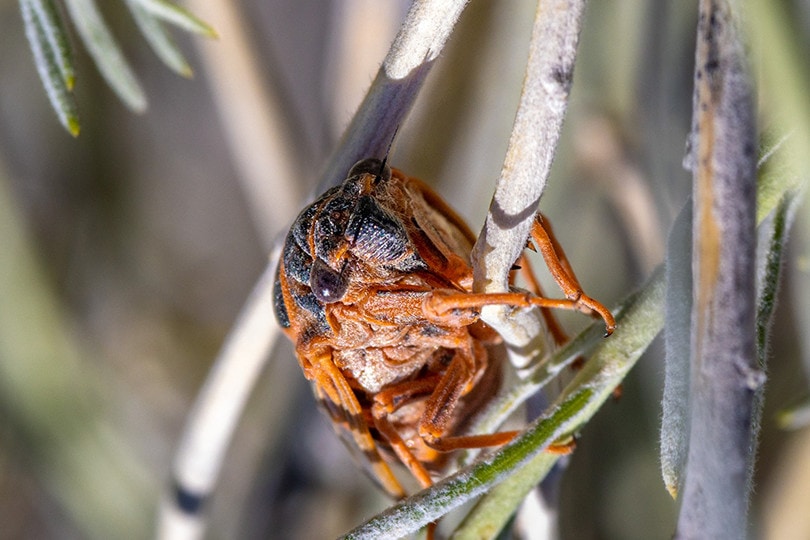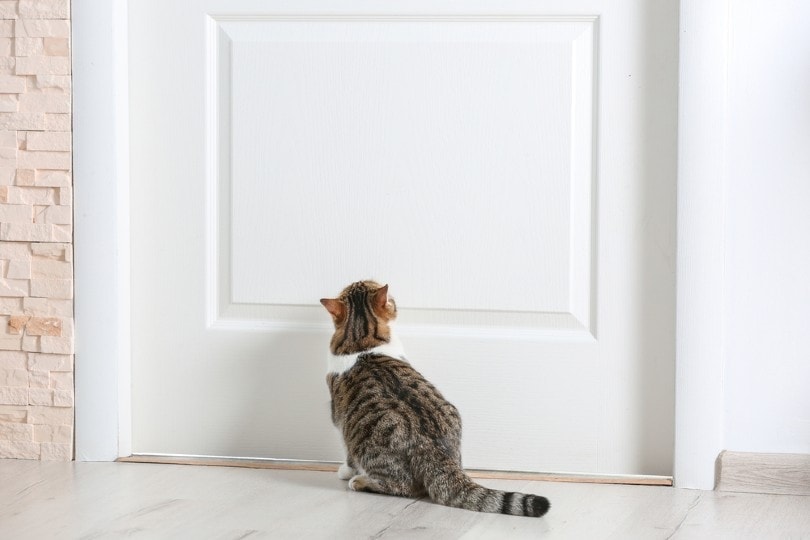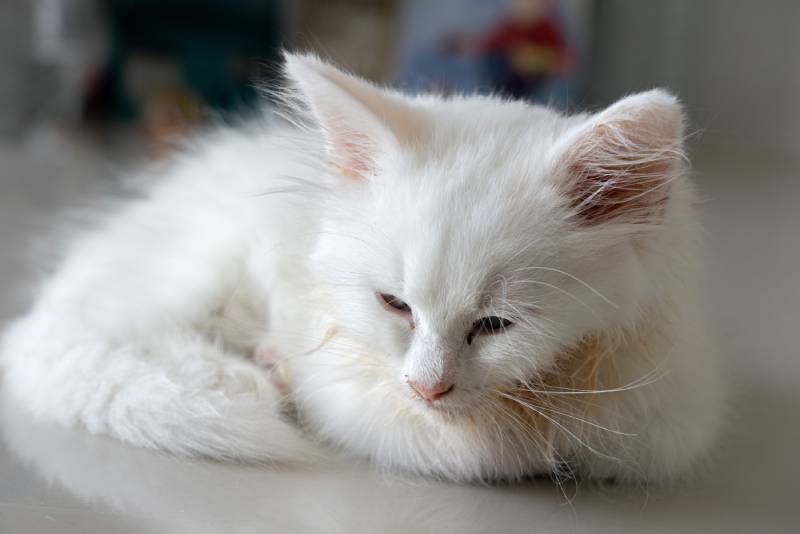What Is the History of Tuxedo Cats? Origins to Modern Day Explained
By Ashley Bates
Updated on
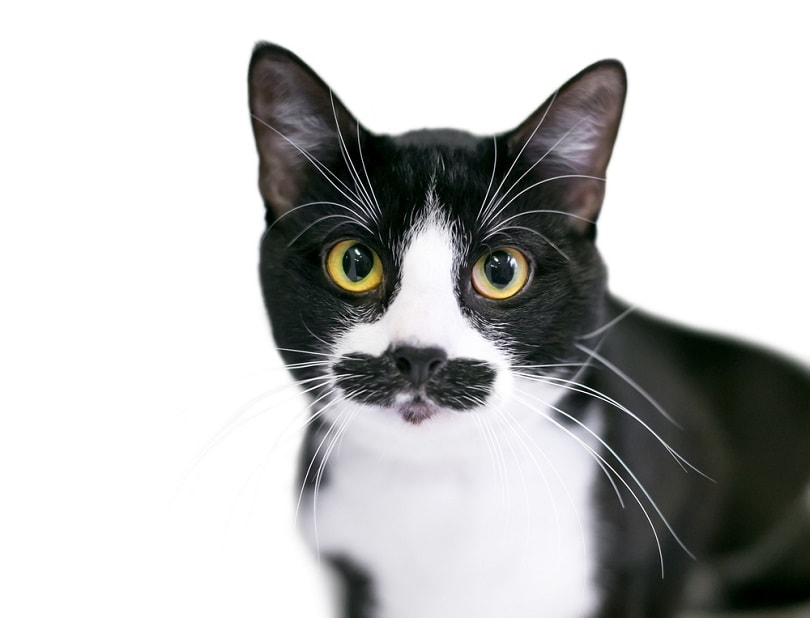
We have quite a selection of domesticated kitties to choose from. Some are hairless, and others have lustrous locks. Cats come with short legs, long legs, bob tails, fluffy tails, and everything in between. Each color, personality, and activity level exists, including the brilliant tuxedo pattern.
The tuxedo pattern, nature’s very own debonair aesthetic, is one of the most common in cats. But where did that color pattern begin? Was it a natural occurrence, or did humans have a hand in creating this through selective breeding? Let’s find out all about these suit-wearing felines.
Tuxedo Cats: Brief Description
Tuxedo cats are often described as bicolor or piebald cats that can vary in color from black and white to tabby and white. They have a distinct pattern of a white chest and paws, creating the “tuxedo” look that gave them their name. However, there are different pattern variations we will discuss later.
The tuxedo isn’t a breed but rather a color pattern. It can show up in several species, especially standard domestic cats.
Most commonly, tuxedos are black and white. If you hear the term “tuxedo,” that’s probably what pops in your mind first. However, the pattern is what’s important.
Even though traditional tuxedo cats have a dark color over white, they can have added nuances in their coats. Here are six color distributions found in tuxedo cats:
- Van
- Harlequin
- Bicolor
- Cap & Saddle
- Mask and Mantle
- Traditional tuxedo
The tuxedo pattern occurs naturally and was not created through selective breeding.

History of Domestic Tuxedo Cats
The tuxedo pattern has been around since the beginning of domestication. Cats have been domesticated for thousands of years and have transformed from what people once believed were gods and goddesses to favorite household family pets.
Tuxedos in Ancient Egypt
Some researchers claim that if you look at the hieroglyphics and drawings of the ancient Egyptians, you can see tuxedo cats in the limelight. The cats seem to have been worshipped and revered as gods and goddesses.
But is this a fact? Are the cats once loved so much by our Egyptian ancestors the same as they were today? It seems sources can’t 100% verify claims.
If you look at Egyptian history, the cats at that time did not share enough traits with our domestic kitties as we know them. When you think of a traditional tuxedo house cat, the Egyptian cats were larger and had different bodily shapes.
However, like how wolves are related to dogs, tuxedo cats evolved from their wild kitty cousins.
Friends to Famous Historical Figures
Tuxedo cats didn’t trail off in history with Egyptians. They accompanied many famous people throughout history, including William Shakespeare and Sir Isaac Newton.
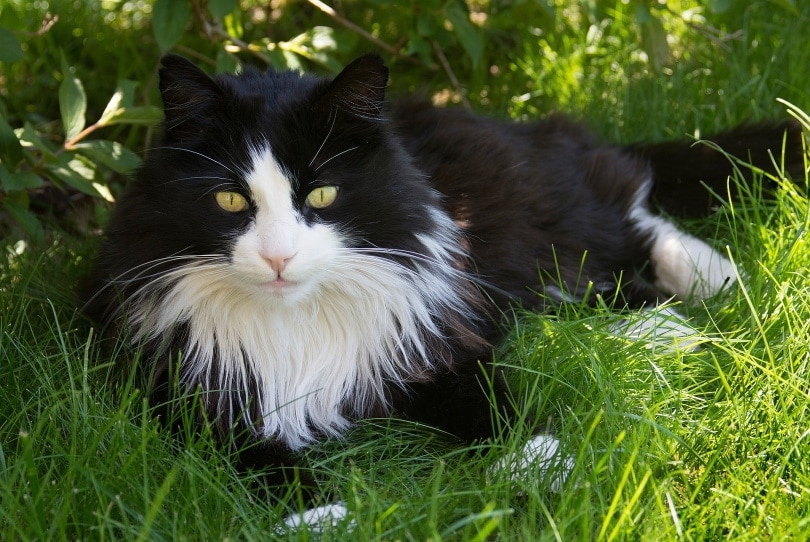
Tuxedos on TV
Our domesticated companions have inspired a series of characters from fellow cat lovers. Even though cats of all colors and patterns show up on the big screen, there are quite a few tuxedo pattern cats on the scene, like:
- Cat in the Hat
- Figaro
- Sylvester the Cat
- Felix the cat
And there are many more—both living and cartoon. A tuxedo cat named Socks was even the first kitty to set foot in the Whitehouse of the United States.
Tuxedos Today
The tuxedo pattern is incredibly prevalent in cats today, but even though the cats are unique and wonderful in their own right, they tend to run into trouble finding homes. According to studies, tuxedos are among the least adopted pets in shelters.
You can do your part to help tuxedo cats find their forever homes. There are plenty of shelters and programs you can donate to that help foster and care for these pets. You can also use sites like Petfinder to search for local adoptable animals in your neighborhood.
Also, don’t underestimate the power of social media. You can post pictures from local rescues and shelters to show your friends. You never know when someone is looking for a new family member. You could also volunteer or foster at your local shelter.
Personality & Intelligence of Tuxedo Cats
Tuxedo cats are known to be incredibly intelligent, even more so than other felines. They are strong-willed and notoriously stubborn at times. Even though they are bullheaded, they aren’t difficult to train, especially concepts like litter box use.
Mental stimulation is just as essential as physical exercise for this type of cat. Tuxedo cats often benefit from a wide selection of toys that can keep them busy and entertained. They make excellent playmates for children and get along well with other pets. Tuxedos often thrive when they aren’t the only animal around.
If your tuxedo cat is alone most of the time or without proper stimulation, it could cause depression or destructive tendencies.
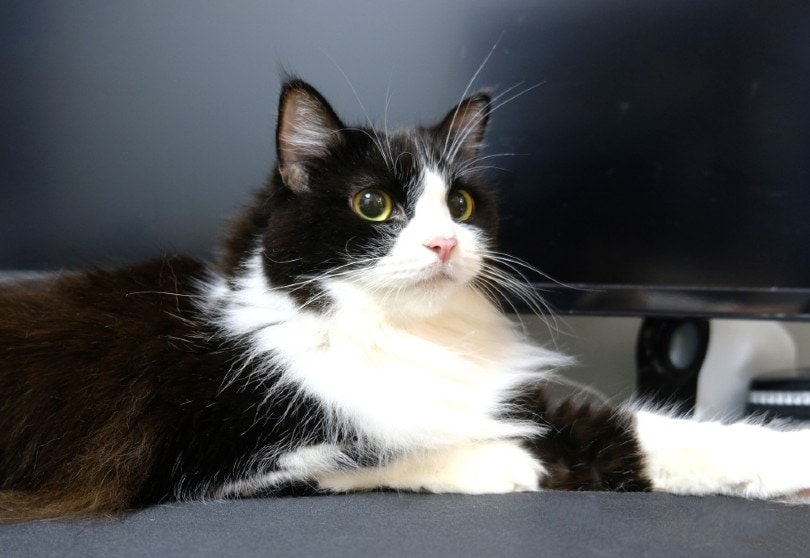
The Health of Tuxedo Cats
Since the tuxedo pattern can appear in various breeds, it’s hard to pinpoint the health of this overall category of cat. However, most cats tend to be generally healthy except for a few ailments. These issues are commonly seen across the board in all cats, tuxedos included.
- Obesity. All cats slow down with age as their activity levels decrease. Their appetites might also increase from boredom or other factors, leading to overeating. If you allow this to continue, your cat may become clinically obese and require a veterinary plan.
- Diabetes. Obesity is just a precursor to something much more severe: diabetes. Cats, just like humans, can get type 1 and type 2 diabetes. Prevention and management are possible, but your cat being overweight is a significant risk factor for diabetes.
- Cancer. Cancer claims many feline lives, unfortunately. There are no underlying reasons cats contract cancer. They can get cancer in nearly any system of their bodies, and it greatly depends on the individual, environmental conditions, and what they were exposed to.
Conclusion
Whether you have a tuxedo cat or just love how they look, now you know a little about where these beautiful creatures came from. Even though the tuxies we know and love today might not be the same as their Egyptian ancestors, the myths remain the same.
Remember, they are one of the most unpopular choices among shelter cats. So, if you deeply love this pattern, you can adopt or fund a cat to help them find a forever home. Check your local shelter for options.
- Related Read: 25 Famous Cats From History & Today
Featured Image Credit: Mary Swift, Shutterstock


